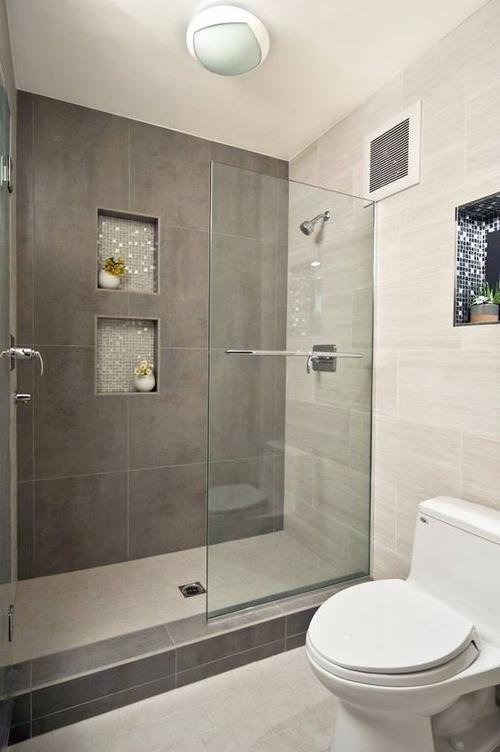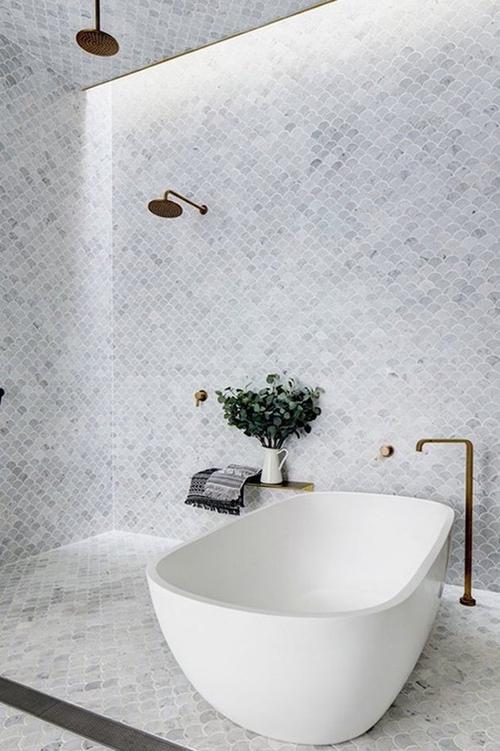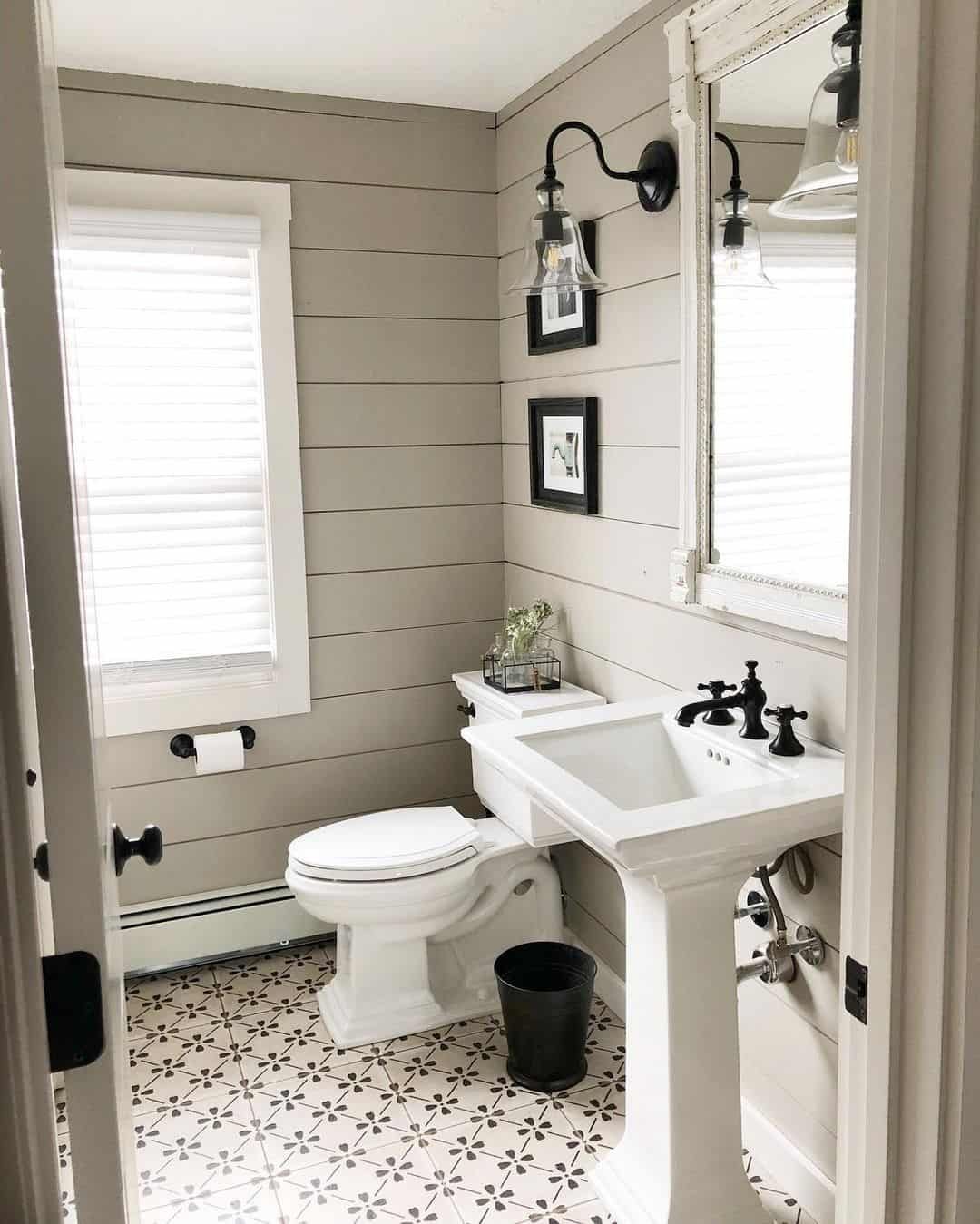Small bathroom half wall shower can be a challenging yet rewarding endeavor, especially when considering the incorporation of a half wall shower. Half wall showers offer a stylish and functional solution for maximizing space while maintaining an open and airy feel. In this comprehensive guide, we’ll explore the step-by-step process of renovating a small bathroom with a half wall shower, from planning and design considerations to installation and finishing touches.

-
Assessing Space and Layout:
Before embarking on a bathroom renovation project, it’s essential to assess the available space and layout constraints. Measure the dimensions of the bathroom, including width, length, and ceiling height, to determine the feasibility of incorporating a half wall shower. Consider factors such as existing plumbing lines, door swing, and proximity to other fixtures when planning the layout of the shower area.
-
Planning the Design:
Once you have a clear understanding of the space and layout, begin planning the design of your half wall shower. Consider factors such as aesthetics, functionality, and accessibility when selecting materials, fixtures, and finishes. Choose a cohesive color scheme and design style that complements the overall aesthetic of your wall bathroom while maximizing visual space and natural light.
-
Selecting Materials and Fixtures:
When selecting materials and fixtures for your half wall shower, prioritize durability, water resistance, and ease of maintenance. Opt for non-porous materials such as ceramic tile, porcelain, or natural stone for the walls and floor to prevent water damage and mold growth. Choose sleek and space-saving fixtures, such as a frameless glass shower door, wall-mounted showerhead, and minimalist hardware, to enhance the openness of the shower area.
-
Creating a Waterproof Barrier:
Proper waterproofing is crucial for preventing water leakage and structural damage in a half wall shower. Install a waterproof membrane, such as a liquid waterproofing compound or waterproofing sheet membrane, on the walls and floor of the shower area to create a watertight barrier. Pay special attention to seams, corners, and joints to ensure thorough coverage and protection against moisture penetration.

-
Building the Half Wall:
Constructing the half wall for the shower enclosure requires careful planning and precise execution. Begin by framing the wall using moisture-resistant lumber or waterproof cement board, ensuring stability and structural integrity. Install the wall studs at regular intervals and secure them to the floor and ceiling joists using screws or nails. Finish the wall with moisture-resistant drywall or cement board, and seal the seams with waterproof tape and joint compound.
-
Installing the Shower Fixtures:
Once the half wall is in place, proceed with installing the shower fixtures, including the showerhead, controls, and drainage system. Position the showerhead at an optimal height for comfortable use, and install a thermostatic mixing valve to regulate water temperature and pressure. Ensure proper slope and drainage for the shower floor to prevent water pooling and promote efficient drainage.
-
Finishing Touches and Decor:
After installing the shower fixtures, complete the renovation with finishing touches and decor to enhance the overall aesthetic and functionality of the bathroom accent wall. Install a frameless glass shower door to create a seamless and open feel, and add a shower niche or shelf for storing toiletries and bath essentials. Consider incorporating decorative elements such as mosaic tile accents, accent lighting, and greenery to add personality and style to the space.
-
Regular Maintenance and Care:
To ensure the longevity and performance of your half wall shower, practice regular maintenance and care. Clean the shower walls, floor, and fixtures regularly with mild detergent and water to remove soap scum, mineral deposits, and bacteria. Check for signs of water damage or leakage periodically, and address any issues promptly to prevent costly repairs and structural damage.

Advantages of small bathroom half wall shower
In the realm of interior design, maximizing space without compromising functionality and aesthetics is a common challenge, particularly in small bathrooms. One innovative solution gaining popularity is the incorporation of a half wall shower. This design approach offers numerous advantages, ranging from visual spaciousness to enhanced accessibility and style.
A half wall shower typically refers to a shower enclosure that features a low wall, usually around waist-high, separating the shower area from the rest of the bathroom. Unlike traditional fully enclosed showers, a half wall shower creates a sense of openness and spaciousness while still providing privacy and containment for showering activities. This design concept allows natural light to penetrate the space more freely, making the bathroom feel brighter and more inviting.
Advantages of Installing a Half Wall Shower in a Small Bathroom:
-
Space Optimization:
One of the primary advantages of a half wall shower is its ability to optimize space in a small bathroom. By eliminating the need for a full enclosure, a half wall shower creates a visually larger and more open environment. The partial barrier delineates the shower area without partitioning off a significant portion of the bathroom wall making the space feel less cramped and claustrophobic.
-
Enhanced Visual Flow:
The open design of a half wall shower promotes better visual flow within the bathroom, as there are fewer visual barriers to impede sightlines. This uninterrupted flow contributes to a more harmonious and cohesive aesthetic, allowing the eye to travel seamlessly throughout the space. Additionally, the transparency of materials such as glass can further enhance the sense of continuity by maintaining a connection between the shower area and the surrounding environment.

-
Improved Accessibility:
Accessibility is another key benefit of a half wall shower, particularly for individuals with mobility limitations or those who require assistance while bathing. The low-profile entryway of a half wall shower eliminates the need for cumbersome doors or step-in thresholds, making it easier to enter and exit the shower safely. This barrier-free design also facilitates wheelchair access and promotes independence for users with diverse needs.
-
Versatile Design Options:
Half wall showers offer a high degree of design flexibility, allowing homeowners to customize the look and feel of their bathroom to suit their preferences and lifestyle. From the selection of materials and finishes to the configuration of the half wall itself, there are endless possibilities for personalization. Whether you prefer a sleek and modern aesthetic or a more traditional and rustic style, a half wall shower can be tailored to complement any design scheme.
Conclusion:
Renovating a small bathroom with a half wall shower requires careful planning, attention to detail, and skilled execution. By assessing space and layout, planning the design, selecting appropriate materials and fixtures, creating a waterproof barrier, building the half wall, installing shower fixtures, adding finishing touches, and practicing regular maintenance and care, you can create a stylish, functional, and inviting bathroom space that maximizes space efficiency and enhances the overall value of your home. With proper planning and execution, a half wall shower can transform a small bathroom into a luxurious retreat where you can relax, refresh, and rejuvenate with ease.

